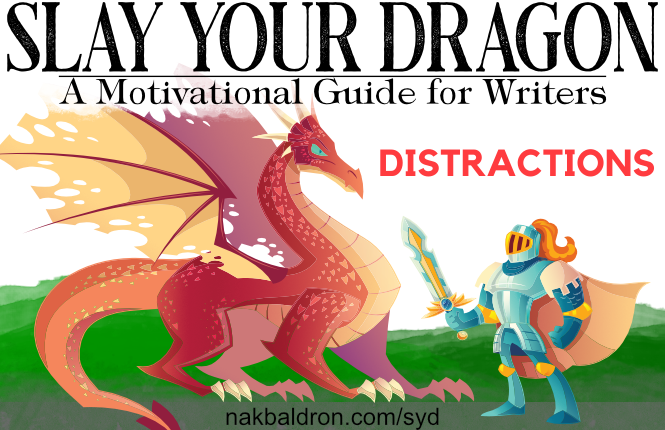The ability to meet deadlines is an essential aspect of being a professional author. Deadlines are important for many reasons, including ensuring that your work is completed and delivered on time, meeting the expectations of your editor or publisher, and maintaining your reputation as a reliable and professional author.
To meet deadlines as a professional author, it is important to:
Plan ahead:
Planning ahead is an important aspect of being able to meet deadlines as a professional author. By creating a schedule and timeline for your writing and revision process, you can ensure that you have enough time to complete your work and meet your deadlines.
To plan ahead as a professional author:
Identify your deadlines: Determine the deadlines for your work, including any milestones or intermediate deadlines.
Break your work down into smaller tasks: Divide your work into smaller, more manageable tasks, and assign deadlines to each task.
Create a timeline: Use your deadlines and tasks to create a timeline for your work, and identify any potential conflicts or challenges that you may need to address.
Allow for flexibility: Be flexible and adaptable, and be prepared to make adjustments to your timeline as needed.
Communicate with your editor or publisher: Communicate your plan and timeline with your editor or publisher, and seek their input and guidance as needed.
Overall, planning ahead involves identifying your deadlines, breaking your work down into smaller tasks, creating a timeline, and being flexible and adaptable.
Set realistic goals:
Setting realistic goals is an important aspect of being able to meet deadlines as a professional author. By setting realistic goals, you can ensure that you are able to complete your work in a timely and sustainable manner, without feeling overwhelmed or burnt out. Be realistic about what you can accomplish in a given time period, and set goals and targets that are achievable and sustainable over the long term.
To set realistic goals as a professional author:
Identify your priorities: Determine the most important tasks and priorities for your work, and focus on these tasks first. By accomplishing the most vital task first, you’ll make the most progress in the least amount of time.
Assess your resources: Consider your available time, energy, and resources, and be realistic about what you can accomplish in a given time period.
Seek help and support: Don’t be afraid to seek help or support when needed, whether it is from your editor or publisher, a writing group, or a professional writing coach.
Setting realistic goals involves identifying your priorities, assessing your resources, breaking your goals down into smaller tasks, being flexible and adaptable, and seeking help and support when needed.
Prioritize your tasks:
The Pareto distribution, also known as the 80/20 rule, is a statistical distribution that describes the unequal distribution of wealth or resources within a population. It is named after economist Vilfredo Pareto, who observed that roughly 80% of the wealth in a given population was held by 20% of the population.
The Pareto distribution is often used to describe situations in which a small number of individuals or entities have a disproportionate share of resources or power. It is a common phenomenon in many fields, including economics, sociology, and business, and has been observed in a wide range of contexts, including income distribution, wealth distribution, and market share. It is also often used as a tool to identify and prioritize high-impact activities or investments, by focusing on the “vital few” that have the greatest impact.
Focus on the 20% tasks that will provide you’re the 80% of results!
My personal reflection on the 80/20 rule.
Manage your time effectively:
Use your time efficiently and effectively, and eliminate or minimize distractions and time-wasting activities.
“The 4-Hour Workweek” by Tim Ferriss, offers a controversial and unconventional approach to time management and career development, suggesting that individuals can significantly increase their productivity and achieve a better work-life balance by outsourcing tasks, automating processes, and adopting a more flexible and mobile lifestyle.
At the heart of Ferriss’ philosophy is the idea of “lifestyle design”, which involves building a business or career that is flexible, location-independent, and focused on maximizing personal freedom and fulfillment rather than financial success alone.
To this end, Ferriss advocates for a variety of strategies and tactics, including:
Outsourcing and delegating tasks: Ferriss argues that many people waste a significant amount of time and energy on low-value tasks that can be easily outsourced to others. He suggests using virtual assistants and freelancers to handle tasks such as scheduling, email management, and social media, freeing up time and mental energy for more important and fulfilling work.
Automating processes: Ferriss encourages readers to take advantage of technology and tools that can automate or streamline various business and personal processes, such as invoicing, billing, and customer support. By doing so, individuals can reduce the time and effort required to manage their business and free up more time for other activities.
Setting clear goals and priorities: Ferriss argues that it is important to have a clear vision of what one wants to achieve and to focus on the most important tasks and activities that will help one get there. He advises readers to set specific and measurable goals, eliminate distractions and unnecessary commitments, and use tools such as the “Eisenhower Matrix” to prioritize tasks based on their importance and urgency.
Adopting a flexible and mobile lifestyle: Ferriss advocates for a “location-independent” lifestyle, in which individuals can work and live anywhere in the world, rather than being tied to a specific location or office. He suggests using tools such as coworking spaces, remote work software, and frequent traveler loyalty programs to facilitate this type of lifestyle.
Eisenhower Matrix
The Eisenhower Matrix, also known as the “Urgent-Important Matrix” or “Eisenhower Box,” is a time management tool used to prioritize tasks based on their level of importance and urgency. It was developed by President Dwight D. Eisenhower and is named after him.
The matrix consists of a grid with four quadrants, each representing a different type of task:
Urgent and important: These are tasks that require immediate attention and are critical to achieving one’s goals. Examples might include important meetings, deadlines, or crisis situations.
Important but not urgent: These are tasks that are important for achieving one’s goals, but do not have an immediate deadline. Examples might include long-term projects, strategic planning, or skill development.
This is where the novel lives for most authors; shift it into urgent and important.
Urgent but not important: These are tasks that are pressing but not critical to achieving one’s goals. Examples might include interruptions, last-minute requests, or low-value tasks.
Not urgent and not important: These are tasks that are neither pressing nor critical to achieving one’s goals. Examples might include distractions, low-value activities, or unnecessary commitments.
Urgent | Not Urgent | |
Important | Do | Schedule |
Not Important | Delegate | Drop |
To use the Eisenhower Matrix, individuals can write down their tasks and place them in the appropriate quadrant based on their level of importance and urgency. They can then prioritize tasks by focusing on those in the “urgent and important” quadrant first, followed by those in the “important but not urgent” quadrant. Tasks in the “urgent but not important” and “not urgent and not important” quadrants should be minimized or eliminated if possible.
The Eisenhower Matrix is designed to help individuals focus on the most important tasks and minimize distractions and unnecessary commitments, leading to increased productivity and efficiency. It can be a useful tool for individuals who struggle with time management or who feel overwhelmed by their to-do list.
Communicate clearly:
Communicating clearly about deadlines is an essential aspect of being able to meet deadlines as a professional author. By communicating clearly about deadlines, you can ensure that your editor or publisher is aware of your schedule and timeline, and that you are meeting their expectations.
To communicate clearly about deadlines:
Confirm deadlines in writing: Make sure to confirm deadlines in writing, to ensure that there is a clear and unambiguous understanding of when your work is due. This almost always means by email. A virtual paper trail is important for all parties involved because it provides a clear record of promises.
Establish clear expectations: Communicate your expectations and needs to your editor or publisher, and seek to understand their expectations as well. This should usually involved a bulleted list of dates, and measurable tasks; such as word count requirements and date for first draft.
Communicate early and often: If you anticipate any potential challenges or conflicts with meeting a deadline, communicate with your editor or publisher as early as possible, and work with them to find a solution. You won’t be the first author to miss a deadline, and while it may throw a wrench into the timelines, it’s nothing compared to how bad it will be if you don’t own up to a missed deadline with enough leeway for the publishing/business partner to change their plans.
Use clear and concise language: Use clear and concise language when communicating about deadlines, and avoid using jargon or ambiguous terms. This is not the time to impress with long detailed paragraphs. You should convey deadlines and all updates, in as few words as possible; ideally 50 or less.
Follow up: Follow up with your editor or publisher to confirm that your communication has been received and understood. This is time and place to add in all the explanations and elaborate of your best intentions, not in the initial update email.
Communicating clearly about deadlines is a mark of professionalism so many are missing; it involves confirming deadlines in writing, establishing clear expectations, communicating early and often, using clear and concise language, and following up to ensure that your communication has been received and understood.
Become a member of Aconite Café’s Writer Tribe Patreon and join an exclusive Discord community where you can connect with like-minded writers and take your craft to the next level. Every week, I host a voice chat where I present a thought-provoking topic and answer your questions to help you deepen your understanding and improve your marketing and writing skills.
Don’t miss out on this opportunity to be part of a supportive and dynamic writing community – join today and start reaching your full potential as a writer!





